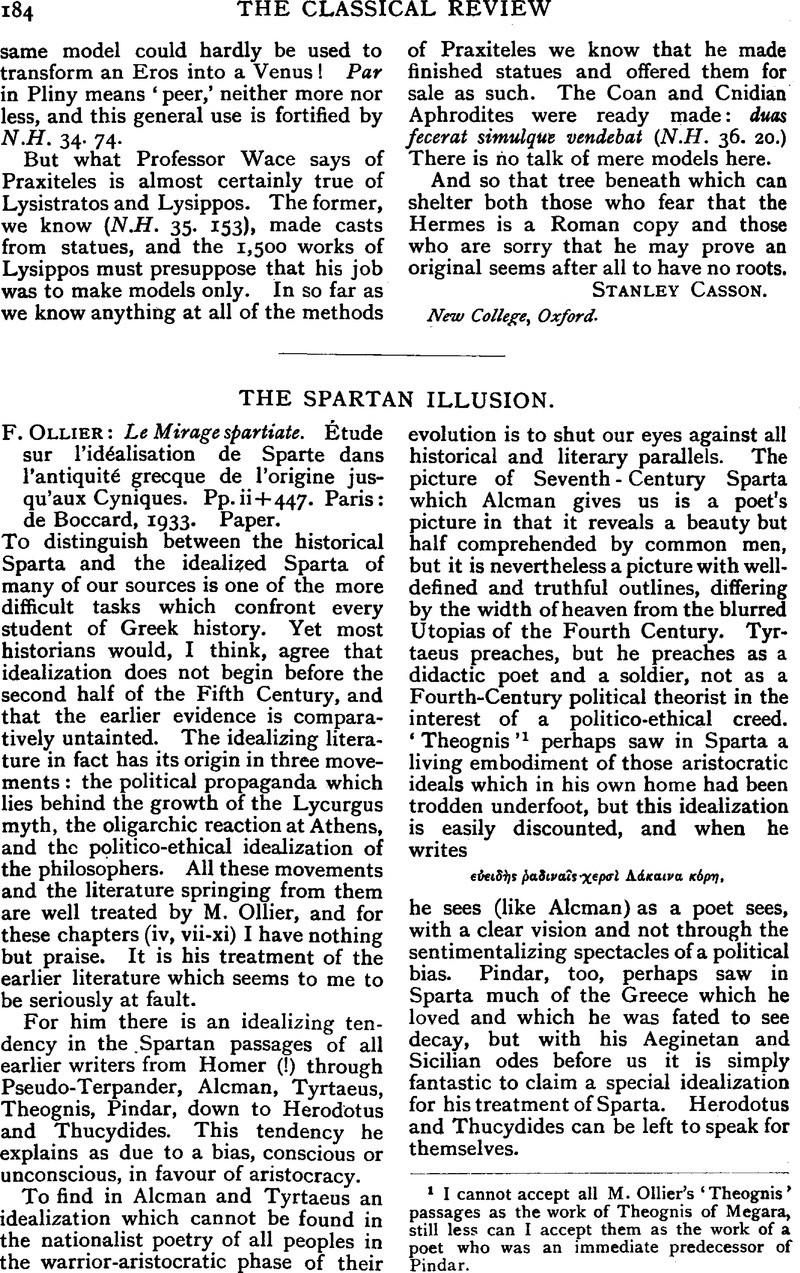No CrossRef data available.
Article contents
The Spartan Illusion - F. Ollier: Le Mirage spartiate. Etude sur l'idéalisation de Sparte dans I'antiquityé grecque de l'origine jusqu'aux Cyniques. Pp. ii+447. Paris: de Boccard, 1933. Paper.
Published online by Cambridge University Press: 27 October 2009
Abstract

- Type
- Reviews
- Information
- Copyright
- Copyright © The Classical Association 1935
References
page 184 note 1 I cannot accept all M. Ollier's ‘Theognis’ passages as the work of Theognis of Megara, still less can I accept them as the work of a poet who was an immediate predecessor of Pindar.
page 185 note 1 The absence of ivory and amber from Sixth-Century Sparta is in no way exceptional. For some reason, possibly mere fashion, both amber and ivory are very rare throughout Greece in the Sixth Century, though comparatively common in the Seventh.
page 185 note 2 The necklace (Orthia Plate cciii no. 14), which might almost serve as an illustration of Alcman's ![]() , belongs, as its archaeological context shows, to the Seventh Century.
, belongs, as its archaeological context shows, to the Seventh Century.




